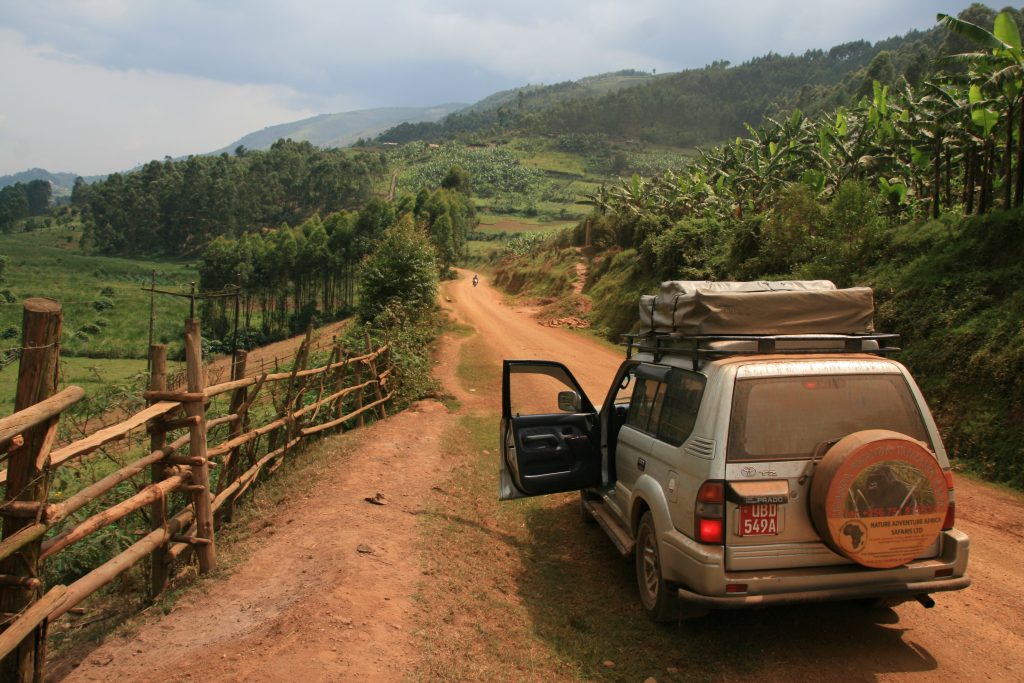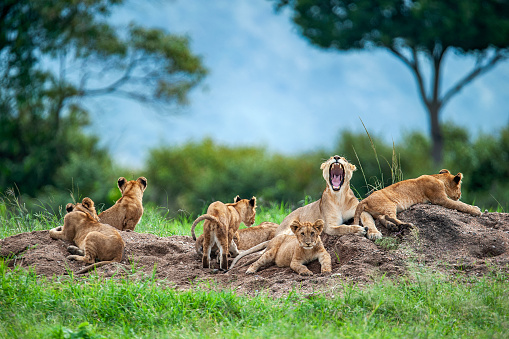
There is no better or worse when it comes to Kenya’s Masai Mara National Reserve and Tanzania’s Serengeti National Park on a road trip in East Africa. These two world-famous safari destinations form part of the same cross-border ecosystem, and have much in common when it comes to landscapes and wildlife.
The Maasai Mara and Serengeti Road Trip

The best of Kenya and Tanzania road trip safari in East Africa. The Masai Mara National Reserve was first turned into a game reserve in 1948. Since then, the protected area has grown and shrunk again currently standing at 1,510 sq. kms (585 sq. miles). However it is part of a far larger protected area, surrounded by private reserves and bordering Tanzania’s vast Serengeti National Park.
Scenically, the Mara is one of the most beautiful parks in Africa. The word ‘Mara’ means spotted and refers both to the shadow patterns of the clouds chasing over the Savannah and the occasional stands of acacia. What the open Savannah does offer is superb visibility and huge numbers of plains animals, which, in turn, act as a fast food joint for endless prowling predators. The net result is that the game viewing is good all year and magnificent between June and September when the great migration herds are in the north.
The Mara is the one protected area in Kenya that everyone wants to visit and the easiest way to find a lion is often to be in your own vehicle. Attracted by the abundant wildebeest, antelope, buffalo and zebra are the predators. There are more lions here than anywhere else in the country, and leopard, cheetah, jackal and hyena also wander the grasslands. Far reaching views across open plains ensure that wildlife is almost never out of sight and it’s not unusual to see a dozen different species at the same time – all good news for big five enthusiasts.
Other great things about the Mara include the spectacular wildebeest migration, which usually crosses into the reserve from Tanzania from August to October, the opportunity to see wildlife from a hot air balloon, and the scenery in the westerly ‘Mara Triangle’, which lies below the Oloololo Escarpment (part of the Rift Valley Wall).
But there’s much more to the Mara than the migration. Its sweeping plains are home to masses of animals that include the Big Five, although rhino are quite difficult to find, and its birdlife is tremendous. Unsurprisingly, it attracts masses of tourists too, catering for all budgets, so if you want to avoid the crowds, steer clear of the high season. Another tip for avoiding the crowds is to stay in one of the conservancies bordering the park.
These are owned by local Maasai who benefit from leasing the land to just a few lodge owners. The animal populations in the conservancies is phenomenal and increasing as more and more animals leave the reserve itself and head to the peace and quiet of the conservancies and, best of all, by and large most local Maasai, who feel they are finally gaining from the presence of wildlife and tourists on ‘their’ land are fully supportive of the conservancies.
Serengeti National Park Road Trip
Whenever you visit the Serengeti, you’re guaranteed a lifetime of memories. If you only ever go on a road trip safari in Tanzania, it should perhaps be to the Serengeti National Park. Wildlife is here in abundance, but it’s best known for the greatest wildlife show on earth starring over a million wildebeest frantically racing for their lives on their annual migratory route to the Masai Mara. Every December – April, this incredible sight ensures that the Serengeti remains one of Africa’s most popular destinations.

The greatest wildlife shows on earth, the year-round spectacle of a million wildebeest and maybe 200,000 zebras chasing the rains on an endless journey in search of grass and water. This is where the wildebeest drop their calves, and where the cheetahs and hyenas have a field day. But be aware: when the green season ends the migration resumes and the herds move on.
Parts of the Serengeti can get busy, especially the central Seronera zone which has the easiest access and highest concentration of camps and lodges. But it’s not hard to get a great slice of the Serengeti to yourself. Indeed on my last trip to the region to the far northwest of the park I actually didn’t see another safari vehicle for three days
The far east of the Serengeti is also very quiet and in the Namiri plains, an area that until very recently was closed to all but scientists and park staff, there’s actually only one camp which means that absolute solitude is almost a given. The western corridor, the humid, fairly wet, finger of land that almost touches Lake Victoria, can also be much quieter than other parts of the park.
As well as looking at where the wildebeest will likely be at the time of your visit it’s worth considering what you yourself want out of a visit. This is a national park and so rules on what is and isn’t allowed are generally much tighter than in the nearby Ngorongoro Conservation Area (off-road driving isn’t allowed here which can make for some rather distant, and frustrating, wildlife viewing), but in some areas and from some camps short walking safaris can be arranged – a wonderful way to view the Serengeti.
To really get the most out of the Serengeti you need to allow plenty of time. This is a massive park and the landscapes, environments and wildlife differs from north to south, east to west and season to season. Ideally it’s best to allow time to see a bit of every area and allow for some rest days, but even if your schedule does only allow for a few days in the Serengeti you can rest assured that it will be a couple of the most memorable days of your life.
